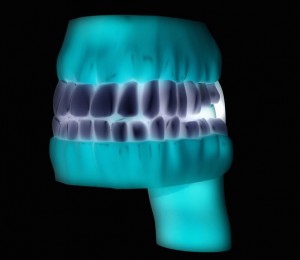NY Times on CEREC
archeology and dentistry
October 6, 20127 Nighttime Tips for Improving Your Oral Hygiene
November 12, 2012NY times on CEREC
OCTOBER 8, 2012, 3:00 PM
I was chewing a piece of steak on a Saturday night last month when an old filling shattered. Suddenly, along with steak I had chunks of gray amalgam and shards of tooth in my mouth. I felt the hole with my tongue — it seemed as large as a crater.
The Digital Doctor
In this special issue of Science Times, we look at some of the many ways that technology is changing the world of medicine.
Go to Special Section »
My dentist later confirmed that I now had a big hole in a molar, too big for a filling. But, the dentist said, if I could spare an hour he could make a crown and put it in, right then and there.
An hour? Aren’t crowns — those tooth-shaped caps that fit over teeth — supposed to require at least two visits? First, the dentist numbs the area and drills the tooth, filing it down to make room for the crown. Then, he or she makes an impression of the tooth to send to a lab. The hole in the tooth is covered with a temporary filling while you wait for your crown.
It arrives at the dentist’s office two or three weeks later. You return for another appointment. The dentist numbs the area, removes the temporary filling and glues the crown in place.
Now, new technology has produced a better way. My dentist happened to be one of the approximately 10 percent who use CAD/CAM — computer-aided design and computer-aided manufacturing — to create a crown while a patient waits. The result is a ceramic crown that can be glued in place. You are done less than an hour after you first sit down in the dentist’s chair.
Maybe you think that dentists are stuck in the technological dark ages, waving pliers and babbling about fluoride. In truth, the profession has quietly embraced sophisticated technology, and I was lucky enough to stumble upon a prime example.
The process starts the same way it used to: The area is numbed, and the dentist drills the tooth to shape it for the crown. But instead of making an impression of the tooth, the dentist uses a tiny camera to create a three-dimensional image of the drilled tooth. A computer program uses that to construct an image of what the tooth will look like with the crown in place. I could see it on the computer screen — a tooth that looked just like mine would when I left the dentist’s office.
Then all the details — the size and shape, the little ridges and indentations — are transmitted to a machine in an adjacent room that mills the crown from a chunk of porcelain. The result is an exact replica of what I saw on the computer screen. When the crown is ready, about 15 minutes later, the dentist glues it in.
